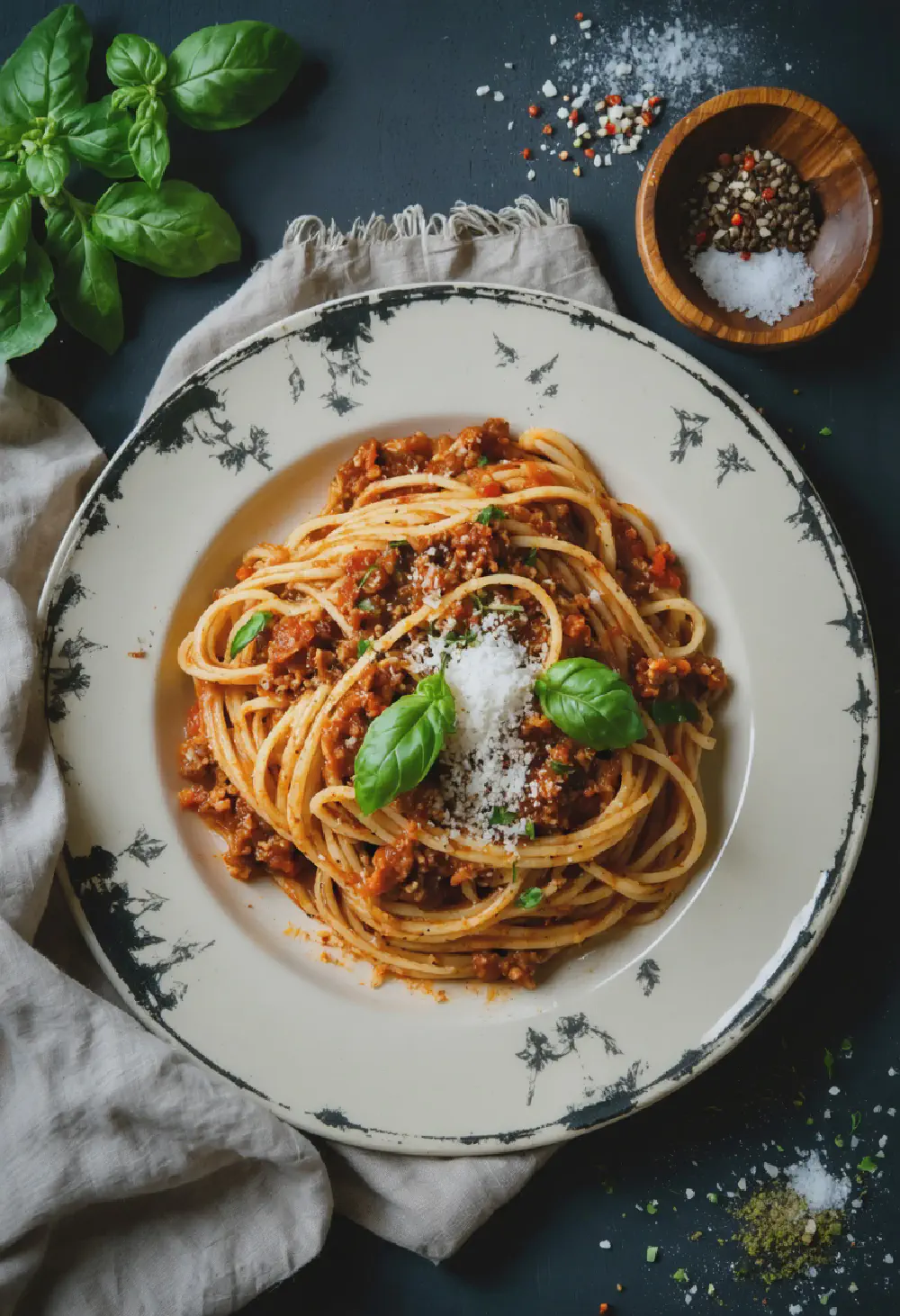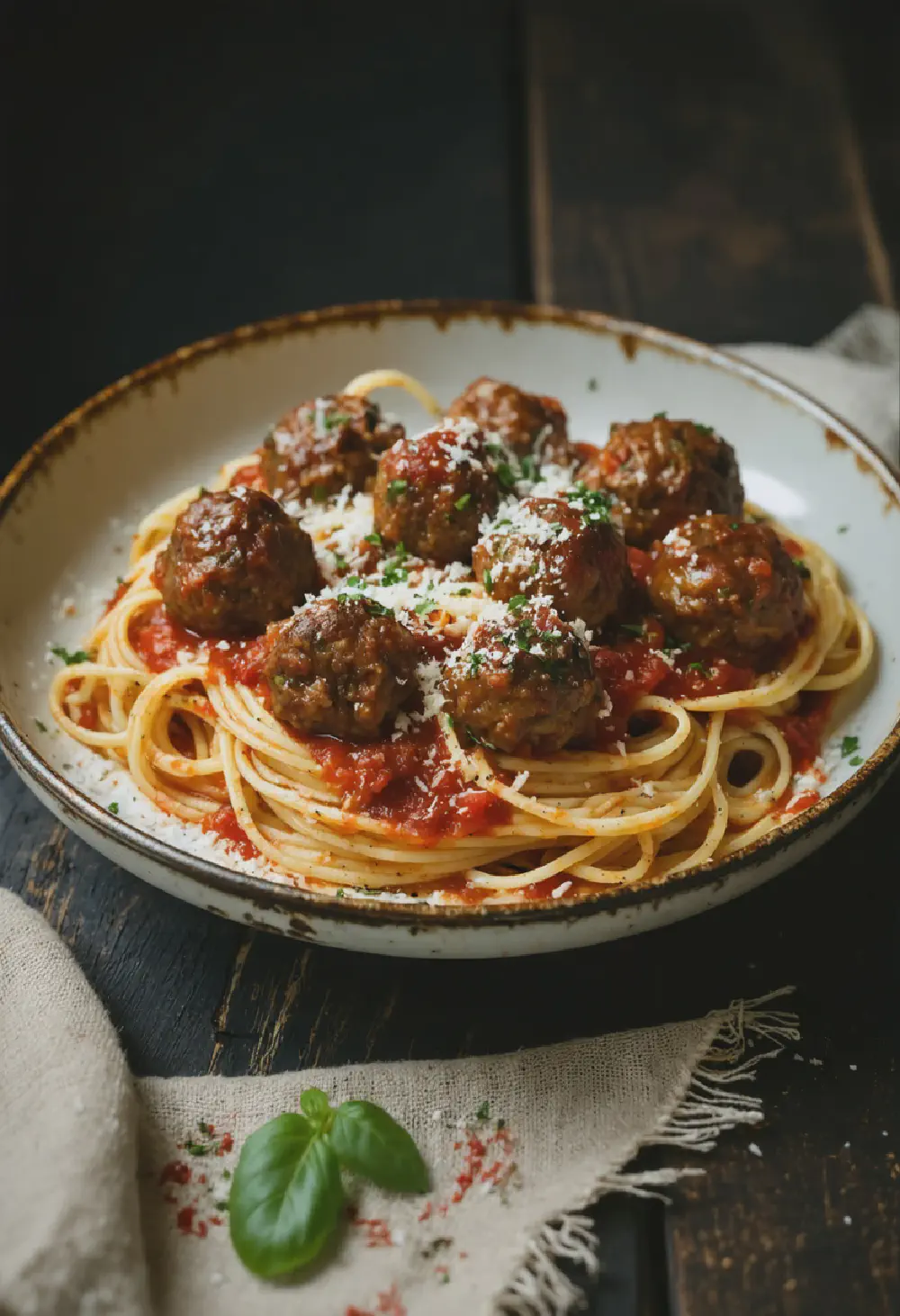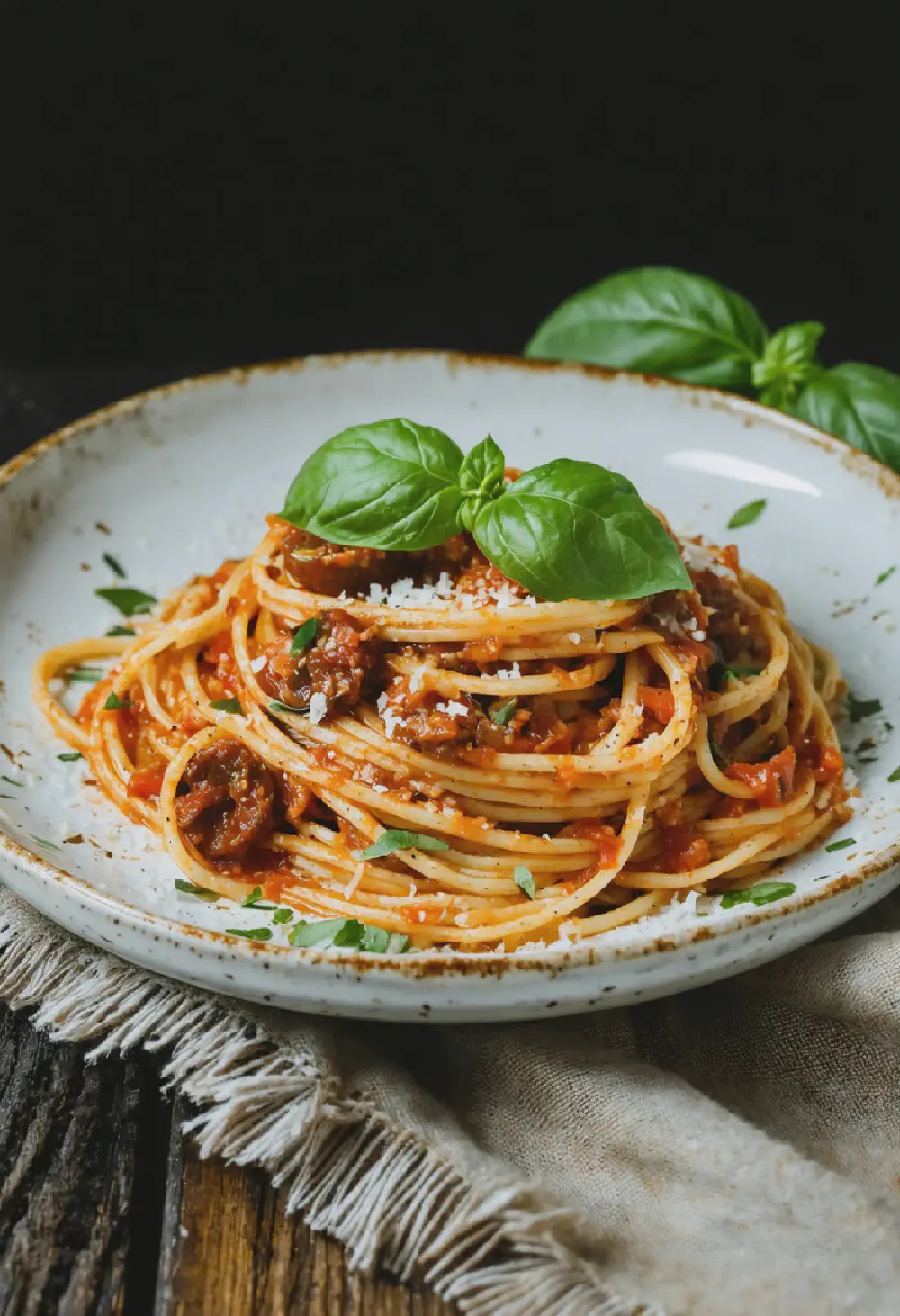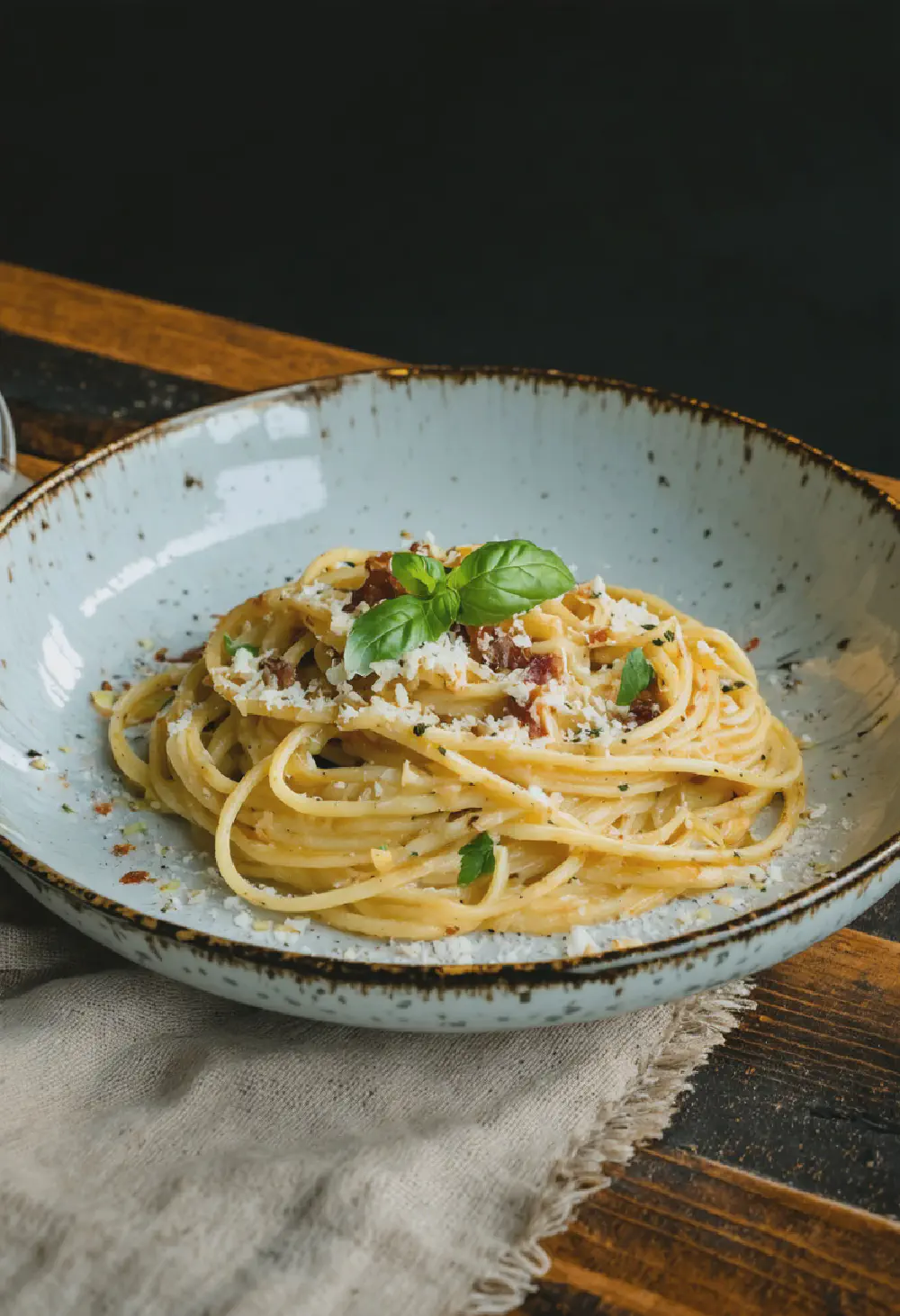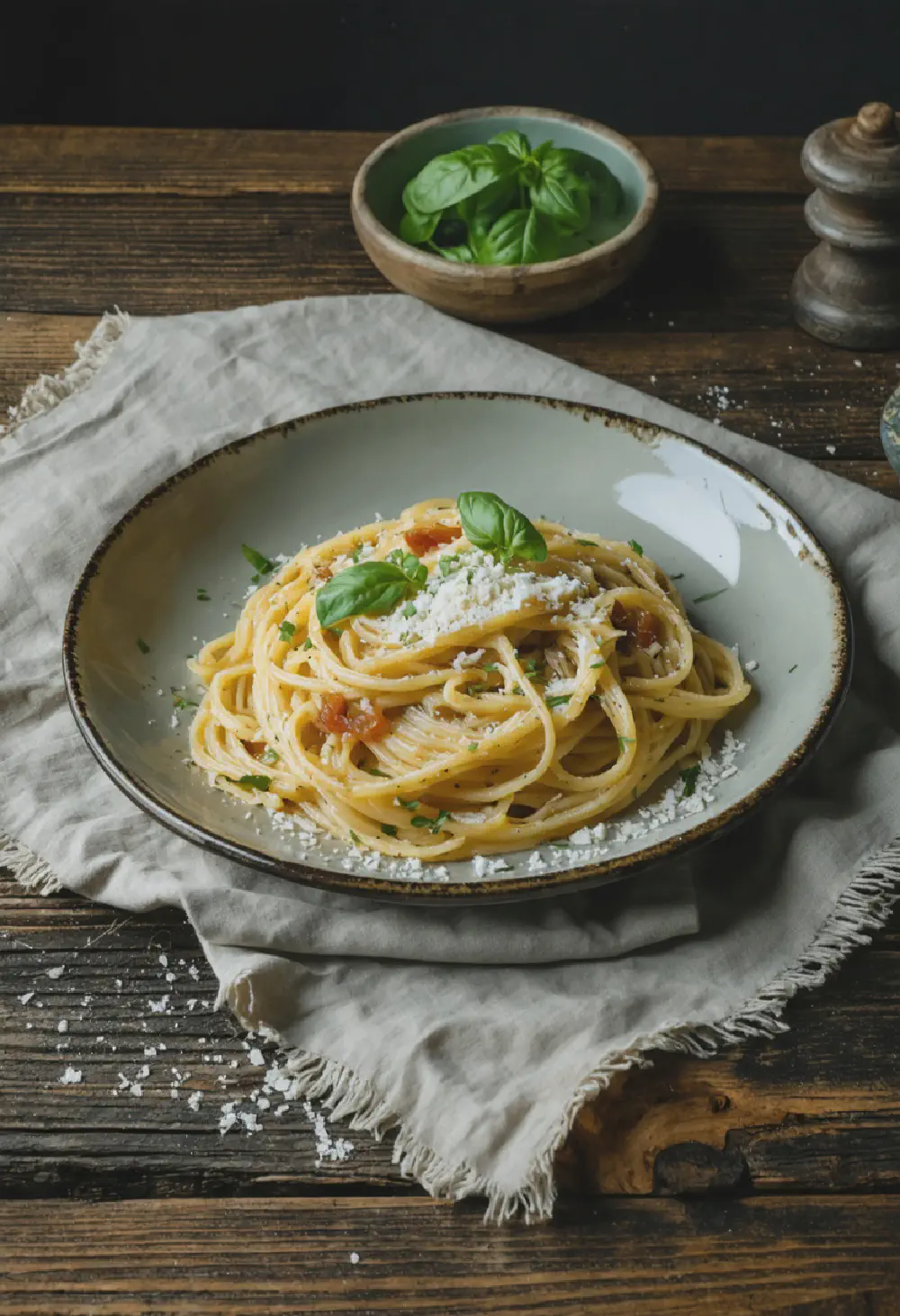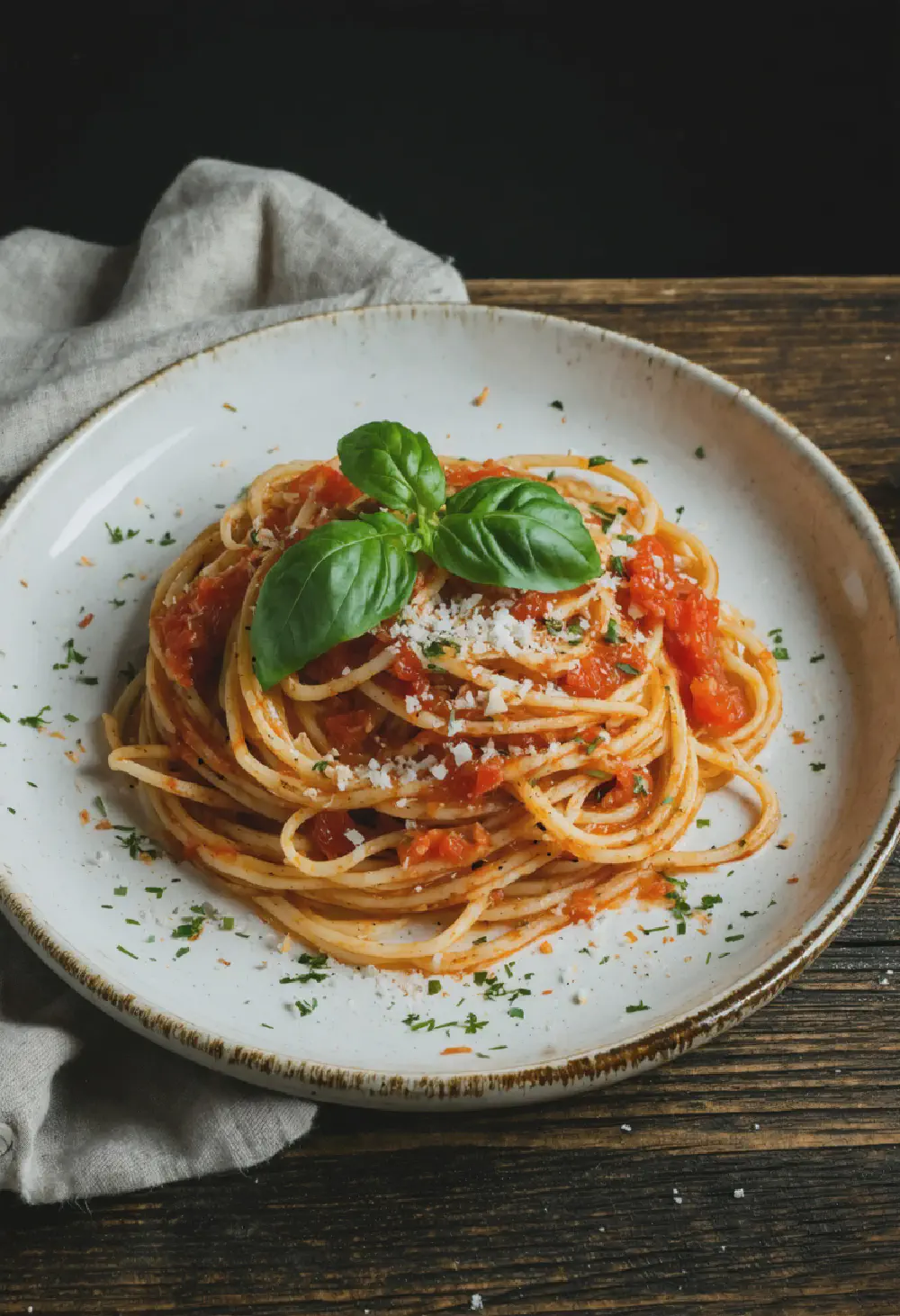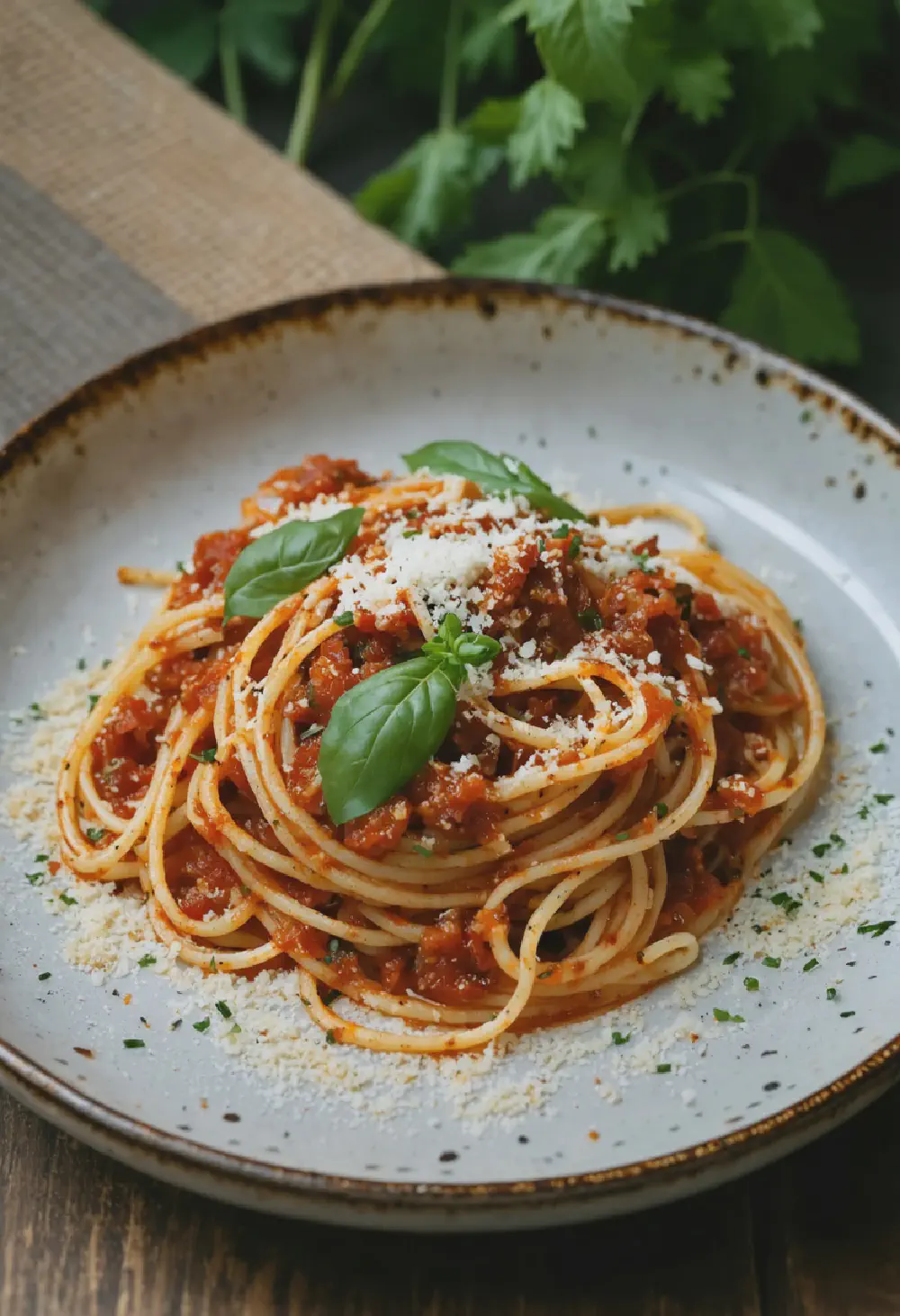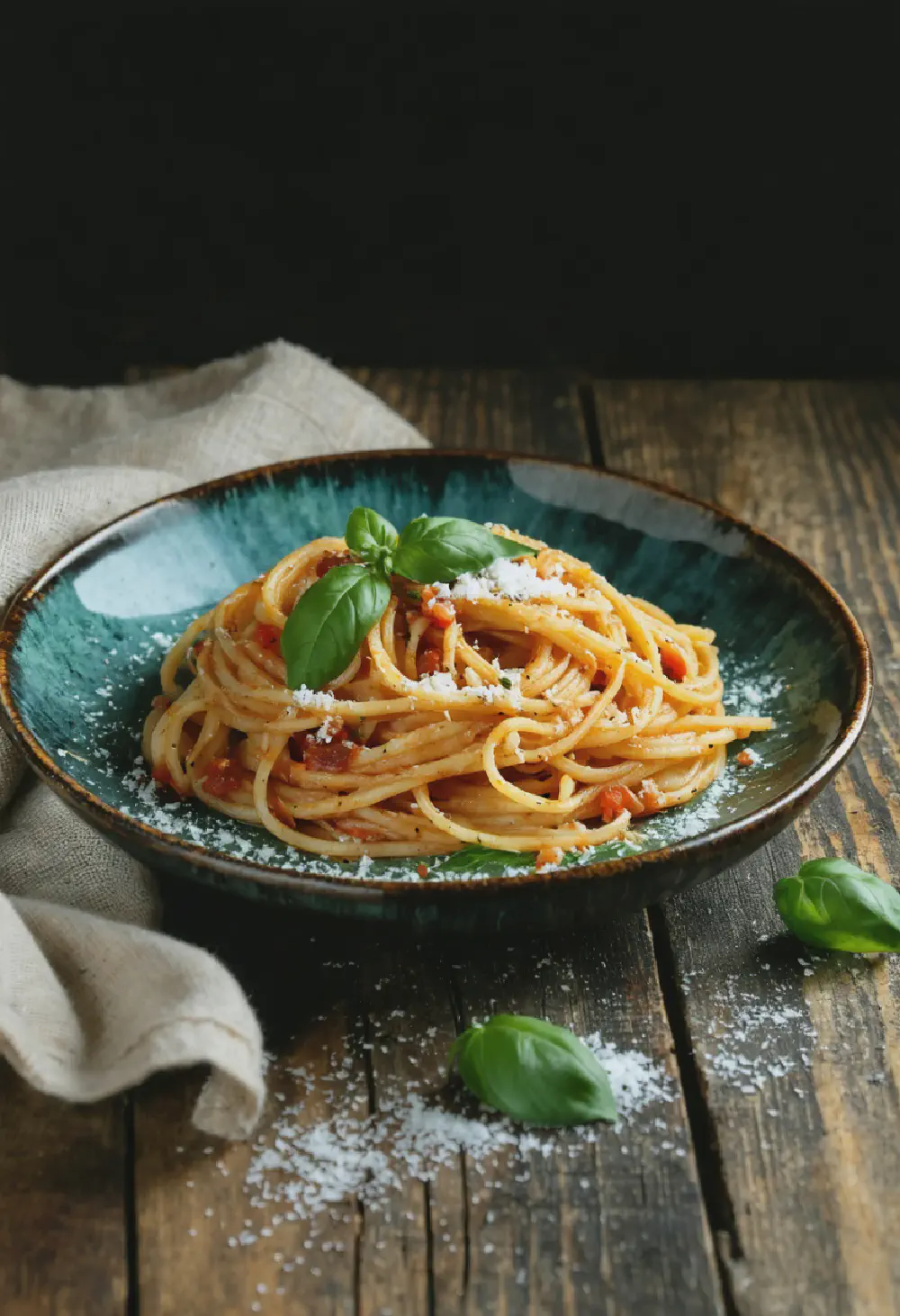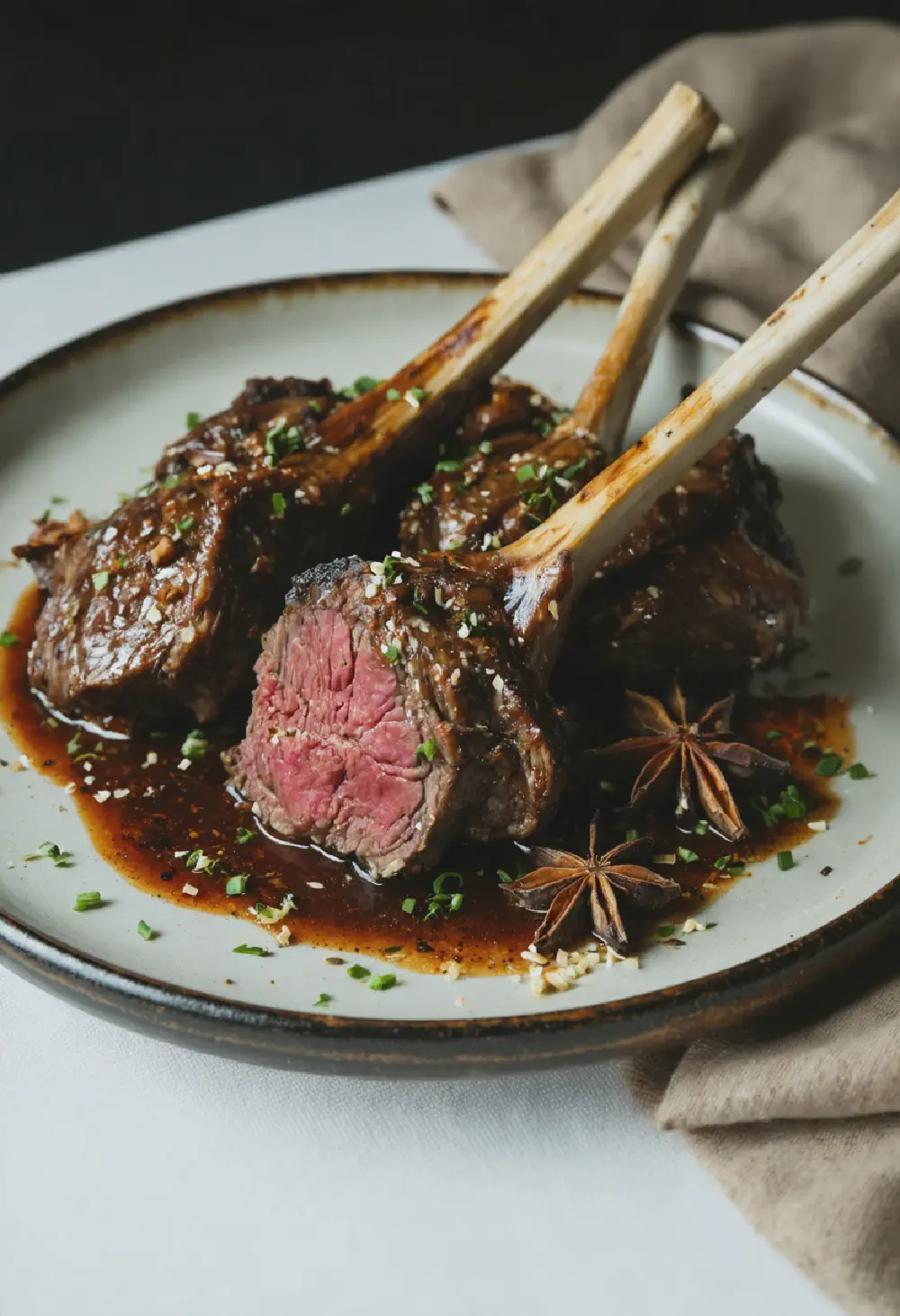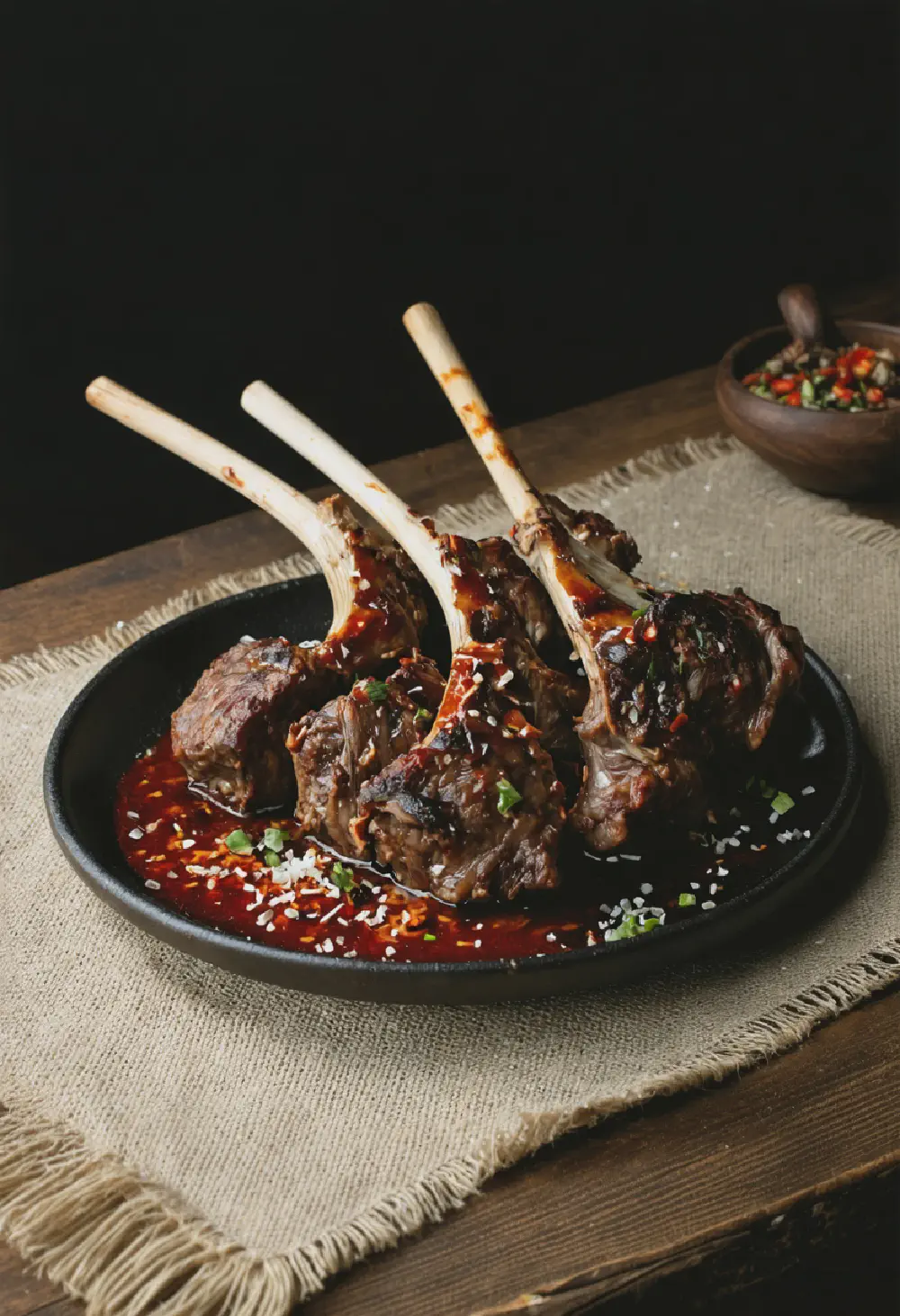Spaghetti alla Bolognese
20M
2H and 50M
- Makes 4 servings
- 2 tablespoons olive oil
- 1 medium onion, finely chopped
- 1 celery stalk, finely chopped
- 1 carrot, finely chopped
- 2 cloves garlic, minced
- 400 grams ground beef
- 100 grams pancetta, finely chopped
- 1 cup dry white wine
- 1 cup whole milk
- 1 can (400 grams) peeled tomatoes, crushed
- Salt and freshly ground black pepper to taste
- 400 grams spaghetti
- Grated Parmesan cheese, for serving
- Heat the olive oil in a large saucepan over medium heat. Add the onion, celery, and carrot, and cook until the vegetables are soft, about 10 minutes.
- Add the garlic and cook for another minute.
- Increase the heat to medium-high, add the ground beef and pancetta, and cook until browned, breaking up the meat with a wooden spoon.
- Pour in the white wine and let it simmer until it has evaporated.
- Add the milk and let it simmer until it has evaporated.
- Stir in the crushed tomatoes, season with salt and pepper, and reduce the heat to low. Let the sauce simmer gently for about 2 hours, stirring occasionally.
- While the sauce is simmering, bring a large pot of salted water to a boil. Cook the spaghetti according to package instructions until al dente.
- Drain the spaghetti and toss it with the Bolognese sauce.
- Serve the spaghetti alla Bolognese hot, topped with grated Parmesan cheese.
Spaghetti alla Bolognese: A Deep Dive into Its History, Taste, and Cultural Significance
History of Spaghetti alla Bolognese
The origins of Spaghetti alla Bolognese trace back to the city of Bologna in the Emilia-Romagna region of Italy. This iconic dish, often simply referred to as “Bolognese,” has a rich history that dates back to the late 18th century. Initially, the sauce was known as “ragù,” a term used to describe a meat-based sauce that was typically served with pasta. Over time, the recipe evolved, and by the 19th century, it became closely associated with the city of Bologna, hence the name “Bolognese.”
The first recorded recipe for a meat sauce resembling today’s Bolognese was documented in the late 18th century by Alberto Alvisi, the chef of the Cardinal of Imola. However, it wasn’t until the 20th century that the dish gained international fame, particularly after World War II when Italian immigrants brought their culinary traditions to other parts of the world. Today, Spaghetti alla Bolognese is a beloved dish enjoyed by millions, and its history continues to be celebrated in Italian cuisine.
Taste Profile of Spaghetti alla Bolognese
Spaghetti alla Bolognese is renowned for its rich and complex flavor profile. The sauce is a harmonious blend of ground meat, typically a mix of beef and pork, slow-cooked with a medley of aromatic vegetables known as “soffritto” – onions, carrots, and celery. The addition of tomatoes, wine, and sometimes milk, creates a depth of flavor that is both hearty and comforting.
The taste of Bolognese sauce is characterized by its savory and slightly sweet undertones, thanks to the slow simmering process that allows the flavors to meld together. The meat provides a robust base, while the soffritto adds a subtle sweetness and earthiness. The wine contributes a slight acidity and richness, and the tomatoes lend a bright, tangy note. When paired with al dente spaghetti, the dish offers a perfect balance of textures and flavors, making it a favorite among pasta lovers worldwide.
Cultural Significance of Spaghetti alla Bolognese in Italian Cuisine
Spaghetti alla Bolognese holds a special place in Italian culinary culture, particularly in the Emilia-Romagna region. It is more than just a dish; it is a symbol of the region’s rich gastronomic heritage. In Bologna, the sauce is traditionally served with tagliatelle, a wide, flat pasta that is believed to better hold the thick, meaty sauce. However, the dish’s popularity has led to its adaptation with spaghetti, which is more widely available and beloved globally.
The cultural significance of Spaghetti alla Bolognese extends beyond its regional roots. It is a testament to the Italian tradition of slow cooking and the importance of family meals. In many Italian households, preparing Bolognese sauce is a labor of love, often cooked in large batches to be enjoyed over several days or frozen for future meals. The dish is also a staple at family gatherings and celebrations, embodying the warmth and conviviality of Italian dining.
In conclusion, Spaghetti alla Bolognese is not just a delicious meal but a culinary icon that represents the heart and soul of Italian cuisine. Its history, taste profile, and cultural significance make it a dish that continues to be cherished and celebrated around the world.
